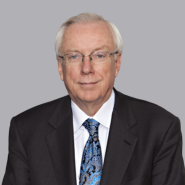Solicitor General on Patent Eligibility
- December 16, 2019
- Article
Associated People
Associated Practices
Associated Technologies
The Solicitor General (SG) was invited by the Supreme Court to provide comments on the certiorari petitions filed by Berkheimer and Hikma to review the Federal Circuit’s 101 decisions adverse to them. The two briefs have numerous similarities including identifying the Court’s decision in Bilski[1] as starting the patent eligibility confusion by not grounding its decision on interpreting the meaning of the 35 U..S.C. 101 terms “process, machine, manufacture, [and] composition of matter.” The SG asserts that in Bilski the Court did not ground its decision on the stature terms but instead found three exceptions to be not required by the statutory text: laws of nature, physical phenomenon, and abstract ideas. While these concepts are found earlier Supreme Court decisions, Bilski represented the first time they were used independent of the statutory language or constitutional concept of the “useful arts.” The SG then described Mayo[2] as continuing the Court’s Bilski practice of not tying patent eligibility to any of the statutory or Constitutional language. Alice[3] characterized the Mayo decisional approach as a two step process.
The SG’s brief in Berkheimer then focuses on the Federal Circuit’s decision, in particular its claim by claim approach to patent eligibility. The brief focuses in on the dispute as to whether or not the Berkheimer claims have sufficient details to meet the requirements of 35 U.S.C. 112. The SG concludes that it would be difficult to provide any meaningful clarity on 101’s boundaries without first knowing whether the claims represent a particular practical implementation of broader software principles to achieve the stated objectives or simply state a desired result. As a result the SG concluded that the petition should be denied unless the Athena [insert footnote] petition in granted and then the petition should be held pending the Court’s decision in Athena[4] and then considered.
In Hikma the SG finds both the first and second steps of the Alice/Mayo test to be ambiguous. As to the first step, the ambiguity is the Court’s use of the term “directed at” a law of nature, natural phenomenon or abstract idea. The SG is correct, claims aren’t “directed at” anything, claims contain limitations which define the claimed subject matter. The PTAB’s approach of simply ignoring the law of nature, natural phenomenon, and abstract idea avoids the issue of “directed at”. See ex Parte Lee, Appeal No. 2017-011014, decided January 14, 2019. The PTAB in Lee after “stripping out” the patent ineligible subject matter then looked to see if any of the steps were new or if the order was new. It found both.
The second step of determining if the remainder of the claim is directed to well-understood, routine, conventional activities previously known to industry, is similarly ambiguous because in part of its overlap with other sections of the Patent Act, sections 102 and 103, and because its inconsistent with the Court’s prior decision in Diehr[5] In Diehr the Court emphasized that the novelty of any step or element is irrelevant to the determination of patent eligibility. The SG also expressed concern that the ambiguity could result in claims with a novel arrangement of known steps being considered patent ineligible.
The SG suggested that the Court return to the history of the Patent Act to look to define the terms in 101. The SG cited to Justice Stevens concurring opinion in Bilski explaining that, although the term “process” standing alone might encompass “[a] process for training a dog, a series of dance steps, [or] a method of shooting a basketball,” context and historical understanding preclude that interpretation of the term as it appears in Section 101.[6]
The SG did not consider Hikma to be the case to clarify 101 since, in his opinion, the Federal Circuit’s opinion was correct. The SG had the same conclusion as in Berkheimer, deny the petition but if the the petition in Athena is granted, hold this petition pending the outcome in the in Athena.
Effectively the SG used the Berkheimer and Hikma petitions to present its views on the Athena petition without being asked.
[1] Bilski v. Kappos, 561 U.S. 593 (2010)
[2] Mayo Collaborative Servs. v. Prometheus Labs., Inc., 566 U.S. 66 (2012) .
[3] Alice Corp. Pty. Ltd. v. CLS Bank Int’l, 573 U.S. 208 (2014)
[4] Athena Diagnostics, Inc. v. Mayo Collaborative Servs., LLC, 927 F.3d 1333 (Fed. Cir. 2019), petition for cert. pending, No. 19-430 (filed Oct. 1, 2019)
[5] Athena Diagnostics, Inc. v. Mayo Collaborative Servs., LLC, 927 F.3d 1333 (Fed. Cir. 2019), petition for cert. pending, No. 19-430 (filed Oct. 1, 2019)
[6] Bilski, 561 U.S. at 624
Attached for your reference:
HP Inc., fka Hewlett-Packard Company, Peitioner v. Steven Berkheimer brief
Hikma Pharmaceuticals USA Inc., et al., Petitioners v. Vanda Pharmaceuticals Inc. brief
Recent Publications
5 IP Rules to Know to Protect Your Business in the United States (article in French)
Coaching INPI Newsletter










 Counseling & Strategic Advice
Counseling & Strategic Advice IP Transactions
IP Transactions Litigation
Litigation PTAB Proceedings
PTAB Proceedings Start-Up
Start-Up Technology Transfer
Technology Transfer Trademark & Designs
Trademark & Designs U.S. Patent Procurement (Application Drafting & Prosecution)
U.S. Patent Procurement (Application Drafting & Prosecution)








